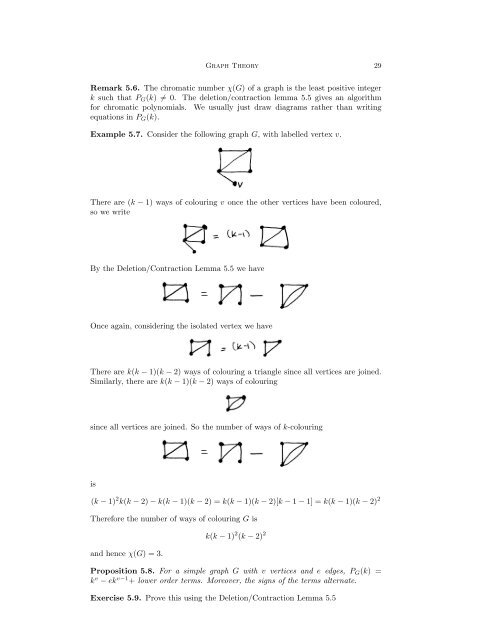You also want an ePaper? Increase the reach of your titles
YUMPU automatically turns print PDFs into web optimized ePapers that Google loves.
<strong>Graph</strong> <strong>Theory</strong> 29Remark 5.6. The chromatic number χ(G) of a graph is the least positive integerk such that P G (k) ≠ 0. The deletion/contraction lemma 5.5 gives an algorithmfor chromatic polynomials. We usually just draw diagrams rather than writingequations in P G (k).Example 5.7. Consider the following graph G, with labelled vertex v.There are (k − 1) ways of colouring v once the other vertices have been coloured,so we writeBy the Deletion/Contraction Lemma 5.5 we haveOnce again, considering the isolated vertex we haveThere are k(k − 1)(k − 2) ways of colouring a triangle since all vertices are joined.Similarly, there are k(k − 1)(k − 2) ways of colouringsince all vertices are joined. So the number of ways of k-colouringis(k − 1) 2 k(k − 2) − k(k − 1)(k − 2) = k(k − 1)(k − 2)[k − 1 − 1] = k(k − 1)(k − 2) 2Therefore the number of ways of colouring G isand hence χ(G) = 3.k(k − 1) 2 (k − 2) 2Proposition 5.8. For a simple graph G with v vertices and e edges, P G (k) =k v − ek v−1 + lower order terms. Moreover, the signs of the terms alternate.Exercise 5.9. Prove this using the Deletion/Contraction Lemma 5.5













